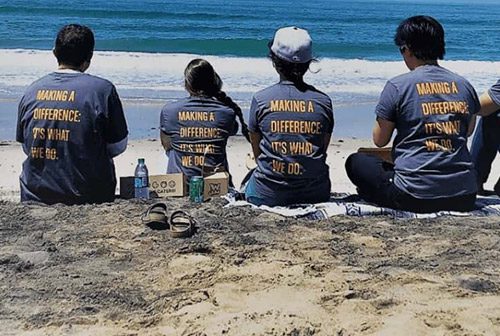The Environmental Quality Report Card series examines environmental stewardship of San Diego Councilmembers and the Mayor. The series looks at history of past reports, shows the voting record of individual Councilmembers, explains voting methodology and examines the environmental issues the Councilmembers voted on.
In this year’s Environmental Quality Report Card, City officials were graded on their positions on a proposal to build a road and bridge through Rose Canyon.
Thanks to the leadership of Councilmember Sherri Lightner, in 2010 the San Diego City Council finally stopped the environmentally destructive Regents Road bridge project in its tracks.
This was a big win for the environment. Mayor Sanders proposed to move this project forward by spending millions of dollars on consultant contracts to do a new Environmental Impact Report (EIR). Councilmember Lightner led the Land Use and Housing Committee to a 3-1 vote to reject those contracts, thus shelving the project. She, along with Councilmembers Todd Gloria and Tony Young, received positive marks on the Environmental Quality Report Card for their votes on this issue. Councilmember Faulconer and the Mayor were marked down for trying to push the project forward.
Councilmember Lightner’s stance against the Regents Road bridge project reversed the City Council’s position on this issue. In 2006, before she was elected, the Council, with Mayor Sanders’ support, voted to certify a previous EIR and build the project despite opposition by many environmental organizations. Friends of Rose Canyon and other organizations sued over the inadequacy of that EIR. To settle the lawsuit, the city was forced to agree to do a brand new EIR. By rejecting the consultant contracts to do that new EIR, the City Council has now taken a stance in favor of protecting Rose Canyon.
The Regents Road bridge project is environmentally destructive, a poor traffic solution, and hugely expensive. It would build a major road plus a massive concrete bridge through the heart of Rose Canyon Open Space Park Preserve. State and federal regulatory agencies have made it clear the city would have a hard time ever getting the necessary environmental approvals for this project. The U.S. Fish and Wildlife Service and the California Department of Fish and Game have urged the city to delete the project from the community plan.


It was 1959 when the Regents Road bridge project was first drawn on a map. Dwight Eisenhower was president. In the north city area of San Diego there was no UCSD, no I-805, no I-5, and no University City. There were few roads and little besides open space where nature thrived and people could get out and enjoy nature. Today, the situation is reversed: the area is blanketed with roads, buildings and parking lots, with only remnants of open space.
Rose Canyon is a last remaining urban greenbelt that stretches across the city. It connects thousands of acres of open space at MCAS Miramar to the east, and to the west to Marion Bear Park, thus serving as a wildlife corridor. It also helps protect the water quality of Mission Bay Park, because it naturally filters water feeding into Mission Bay. People from across the city come to Rose Canyon to run, hike, bike, and enjoy nature. Hundreds of students from surrounding schools walk to the park each year to explore nature.
The battle to protect Rose Canyon is a bellwether in the movement to protect San Diego’s unique urban open space canyons. On this issue, Councilmember Lightner has been an environmental leader.
Deborah Knight is Executive Director of Friends of Rose Canyon, a nonprofit organization.













